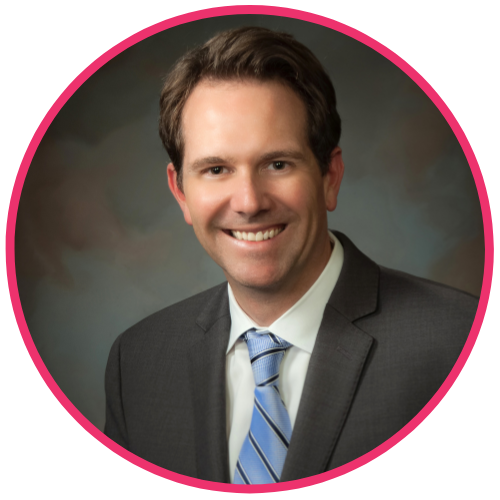
In the business of healthcare, promoting a culture of compliance is not merely a goal – it’s a necessity. Ethical integrity and adhering to regulatory requirements are critical to any organization’s success. That said, implementing compliance policies or appointing an individual to be the compliance officer is not enough. There has to be a commitment throughout all levels of an organization to do the right thing and do things right. To pull that off, the organization needs to have a culture of compliance that is contagious.
I recently stumbled across a book by Jonah Berger, Ph.D., entitled “Contagious: How to Build Word of Mouth in the Digital Age.” Dr. Berger’s book explores the science behind why certain ideas, products, or messages go viral while others do not. According to Dr. Berger, there are six key psychological drivers for word-of-mouth communication among humans:
- Social Currency
- Triggers
- Emotion
- Public
- Practical Value
- Stories
As compliance officers, we play a significant factor in influencing others and shaping our organizations’ culture of compliance. Why not employ some of these drivers to help make our compliance cultures worthy of word-of-mouth around our organizations?
Here are some ideas to get you started.
Social Currency
This concept relates to the things we talk about that make us look good to others or enhance our social status. Dr. Berger’s theory is that when something makes people feel knowledgeable or “in the know,” they are more likely to share it. For example, think about a time when you went to a new restaurant that you loved. You likely told others about your experience, right? That’s social currency.
So how can we create social currency in the context of a compliance culture? Here are some suggestions:
- Find a business and compliance-friendly solution for a proposed new business venture that one of your healthcare leaders is trying to advance.
- Identify lost revenue for a department director while conducting a billing and coding audit.
- Incorporate feedback and input from your department or organizational leaders in a compliance-related decision (e.g., finalizing a new process or policy).

These are just a few examples where the effort you put into your work will result in your healthcare leaders looking good—which means they will tell others about what you did for them.
Triggers
Triggers are certain cues in the environment that can prompt people to talk about a product or idea. According to Dr. Berger, familiarity and everyday reminders play a significant role in keeping things top-of-mind. For example, if I were to say, “Peanut butter and…,” you’re most likely thinking of jelly even though I didn’t have to say it. That’s a trigger.
So how can we create triggers? Here are some ideas:
- Get out of your office and walk around your organization so others physically see you.
- Conduct routine rounding (e.g., consistently visit with staff to see how they’re doing, what’s working well, and what’s not working well).
- Make sure compliance hotline posters are not only displayed throughout the organization, but they have your name and headshot on them so others identify you as the person to contact.
These are just a few examples of how you can establish triggers that keep compliance on the minds of your colleagues. It also helps you establish rapport with others in the organization.
Emotion
According to Dr. Berger, stories with strong positive or negative emotional elements are more likely to be passed on because they create a deeper connection with the audience.
For example, you’ve likely seen advertisements for pet adoption services. As a pet owner, they are tough for me to watch, but they do grab my attention. That’s emotion.
Here are ways to use emotion in compliance:
- Celebrate milestones and achievements (e.g., 100% completion rate for training, successful audit, acknowledging a process change that reduced non-compliance rates).
- Using situational examples from a patient’s point-of-view when discussing potential non-compliance.
- Outline the financial and reputational impact on a department or organization when discussing concerns of non-compliance (e.g., breach of patient health information leads to loss of patient trust).

By doing these things, you can embed an emotional connection to your compliance message – and increase the chances that it resonates with your audience.
Public
Public refers to the behavior of others that people mimic, especially in public settings. If something is observable and easily seen, it’s more likely to be shared. For example, when my 9-year-old sees one of her friends at school with a cell phone, she comes home and makes an argument that we need to buy her a cell phone.
Here’s how we can build this kind of behavior in others:
- Emphasize to your organization’s leadership that Tone-at-the-Top and leading by example in their business decisions demonstrates to employees that a compliance culture is desired.
- Recognize a leader or employee in a public forum (meeting or newsletter) when they have supported the compliance program (e.g., they reported a concern that needed to be corrected).
- Send a thank-you note to an employee’s supervisor when the employee supported the compliance program (e.g., they reported a concern that needed to be corrected).

These are just a few examples of taking a public approach to your work – and fostering word-of-mouth about your compliance program.
Practical Value
People share things that help others solve problems or improve their lives. For example, when I was a kid, there was a TV commercial for Super Glue. In this commercial, they would show a gentleman hanging from a steel beam because they had glued his hard-hat to it. Though I wasn’t working in construction, this image did seem useful if I ever found myself with such a need.
So how can we create practical value in the context of a compliance culture? Here are some ideas:
- When you are explaining complex compliance-related concepts, show others how the organization needs to comply rather than telling them. Find or create interesting or memorable visuals, and then use them.
- As you are communicating your compliance message, emphasize how meeting the requirements benefits your audience.
- Making sure that compliance resources are easily accessible (e.g., make it easy to find and use).
Stories
Dr. Berger states that stories make content more relatable, memorable, and shareable. For example, a few years ago, automobile manufacturer Subaru ran an ad campaign featuring owners of their cars and their stories of how they survived accidents. The ads reinforced the message that Subaru builds a safe car and used customers’ stories to convey that message.
We also can use stories to generate word-of-mouth within our organizations. We can:
- Show examples of when non-compliance affected patient care (in a way that doesn’t violate HIPAA, of course).
- During a training, discuss how a similarly sized organization arrived at a recent settlement.
- Profile employees who are courageous enough to talk about an important compliance matter (in a way that doesn’t reveal the identity of the employee).
Creating a contagious compliance culture is a continuous journey. It requires dedication, consistent effort, and a genuine commitment to ethical values. When done well, and compliance becomes ingrained in the organization’s DNA, it has tremendous benefits including minimizing risk and enhancing the organization’s reputation.
Jay is a compliance professional and consultant in Colorado. Jay is a healthcare lawyer with significant industry knowledge of the U.S. healthcare market. Over the past 20 years, he has worked for large for-profit and non-profit health systems and small physician-owned entities. In tackling the countless regulatory and operational issues for these diverse organization types, he has developed a deep understanding of the business of healthcare and the regulations governing the industry. In 2018, Jay became an adjunct faculty member with the University of Southern California, Gould School of Law, designing and teaching healthcare compliance courses.
Jay obtained his law degree from the University of South Dakota, where he focused on healthcare law. From 2012-2016, he served on the Board of a non-profit organization serving the medically underserved in Colorado (ClinicNET). He is also a member of the Health Care Compliance Association (HCCA), serving on the planning committee for the Mountain Regional Conference since 2008. He is writing a series of articles on compliance culture for the YouCompli blog. This post looks at building trust among your colleagues. This post looks at measuring your organization’s culture of compliance.
Qualified compliance professionals do the heavy lifting for you, simplifying regulatory change management
Our in-house team works tirelessly to monitor US regulators, carefully read the regulations in their entirety, and translate the information into simple regulatory intelligence you can use. We deliver model procedures and expert tools that can be used to fulfill your business requirements. Everything is validated by a third-party law firm. Follow the button below to get a tour of our healthcare compliance software.
Get the latest from healthcare compliance experts
Never miss an article from Jay Anstine. Sign up for YouCompli’s weekly blog email if you haven’t already.


